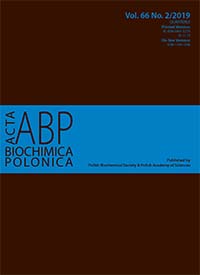Computed tomography indicators of cerebral microperfusion improve long term after carotid stenting in symptomatic patients
Abstract
Objectives: We tested the hypothesis that computed tomography (CT) perfusion markers of cerebral microcirculation would improve 36 months after internal carotid artery stenting for symptomatic carotid stenosis while results obtained 6–8 weeks after the stenting procedure would yield a predictive value. Methods: We recruited consecutive eligible patients with >70% symptomatic carotid stenosis with a complete circle of Willis and normal vertebral arteries to the observational cohort study. We detected changes in the cerebral blood flow (CBF), cerebral blood volume (CBV), mean transit time (MTT), time to peak (TTP) and permeability surface area-product (PS) before and after carotid stenting. We have also compared the absolute differences in the ipsilateral and contralateral CT perfusion markers before and after stenting. The search for regression models of “36 months after stenting” results was based on a stepwise analysis with bidirectional elimination method. Results: A total of 34 patients completed the 36 months follow-up (15 females, mean age of 69.68±S.D. 7.61 years). At 36 months after stenting, the absolute values for CT perfusion markers had improved: CBF (ipsilateral: +7.76%, contralateral: +0.95%); CBV (ipsilateral: +5.13%, contralateral: +3.00%); MTT (ipsilateral: –12.90%; contralateral: –5.63%); TTP (ipsilateral: –2.10%, contralateral: –4.73%) and PS (ipsilateral: –35.21%, contralateral: –35.45%). MTT assessed 6–8 weeks after stenting predicted the MTT value 36 months after stenting (ipsilateral: R2=0.867, contralateral R2=0.688). Conclusions: We have demonstrated improvements in CT perfusion markers of cerebral microcirculation health that persist for at least 3 years after carotid artery stenting in symptomatic patients. MTT assessed 6–8 weeks after stenting yields a predictive value.
Acta Biochimica Polonica is an OpenAccess quarterly and publishes four issues a year. All contents are distributed under the Creative Commons Attribution-ShareAlike 4.0 International (CC BY 4.0) license. Everybody may use the content following terms: Attribution — You must give appropriate credit, provide a link to the license, and indicate if changes were made. You may do so in any reasonable manner, but not in any way that suggests the licensor endorses you or your use.
Copyright for all published papers © stays with the authors.
Copyright for the journal: © Polish Biochemical Society.


